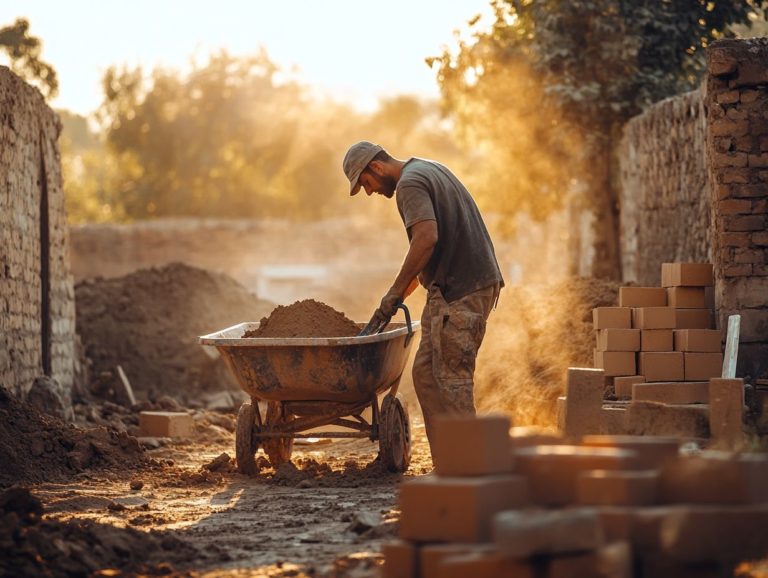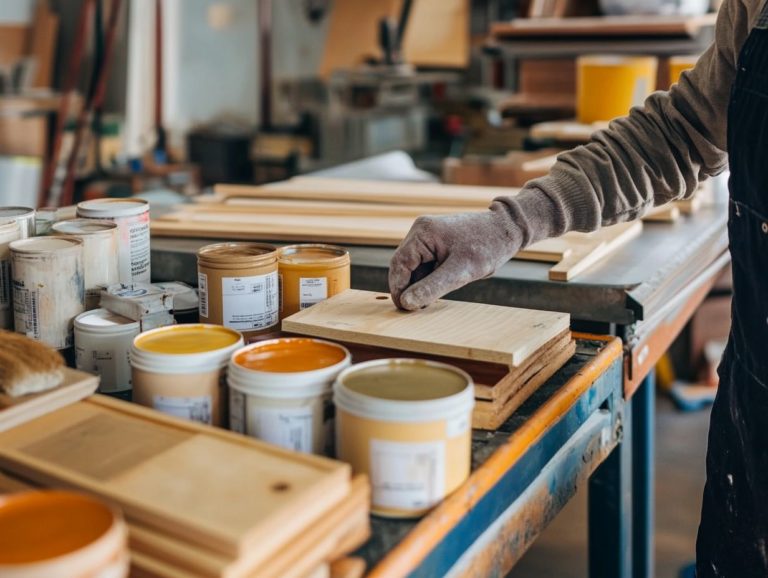10 Ways to Reduce Waste During Renovation
Renovating your home is an exciting adventure that you can enjoy, but it often brings along a hefty dose of waste and environmental impact.
Fortunately, there are smart and straightforward strategies you can employ to minimize that footprint while still crafting your dream space.
This article delves into ten effective ways for you to reduce waste during your renovation, covering everything from meticulous planning to reusing materials and choosing eco-friendly options.
Whether you re a seasoned renovator or stepping into this world for the first time, you ll uncover practical tips that not only benefit the planet but also enhance the sustainability of your project.
Dive in and discover how you can make your renovation greener and more efficient!
Contents
- Key Takeaways:
- 1. Plan Ahead and Be Strategic with Materials
- 2. Reuse Materials from Demolition
- 3. Choose Durable and Long-Lasting Materials
- 4. Donate or Sell Unwanted Materials
- 5. Opt for Sustainable and Eco-Friendly Options
- 6. Use Recycled or Reclaimed Materials
- 7. Avoid Single-Use and Disposable Items
- 8. Properly Dispose of Hazardous Materials
- 9. Consider Salvaging and Repurposing Old Furniture
- 10. Hire a Green Contractor
- What Are the Environmental Impacts of Renovation Waste?
- What Are the Most Common Types of Waste During Renovation?
- What Are the Benefits of Reducing Waste During Renovation?
- How Can a Homeowner Plan for a Low-Waste Renovation?
- What Are Some Tips for Recycling and Reusing Materials During Renovation?
- What Are Some Common Challenges in Reducing Waste During Renovation?
- How Can a Homeowner Encourage Sustainable Practices During Renovation?
- What Are Some Alternatives to Traditional Renovation Materials?
- How Can a Homeowner Properly Dispose of Renovation Waste?
- What Are Some Ways to Incorporate Sustainable Design in a Renovation Project?
- Frequently Asked Questions
- What are some ways to reduce waste during renovation?
- Why Is It Important to Reduce Waste During Renovation?
- How Can I Plan Ahead to Reduce Waste During Renovation?
- What Are Some Eco-Friendly Materials That Can Be Used During Renovation?
- What Should I Do With Hazardous Waste During Renovation?
- Are There Any Incentives for Reducing Waste During Renovation?
Key Takeaways:
- Plan ahead to choose materials wisely and cut down on waste.
- Reuse or donate unwanted items to protect the environment.
- Choose recycled or reclaimed materials for a greener renovation.
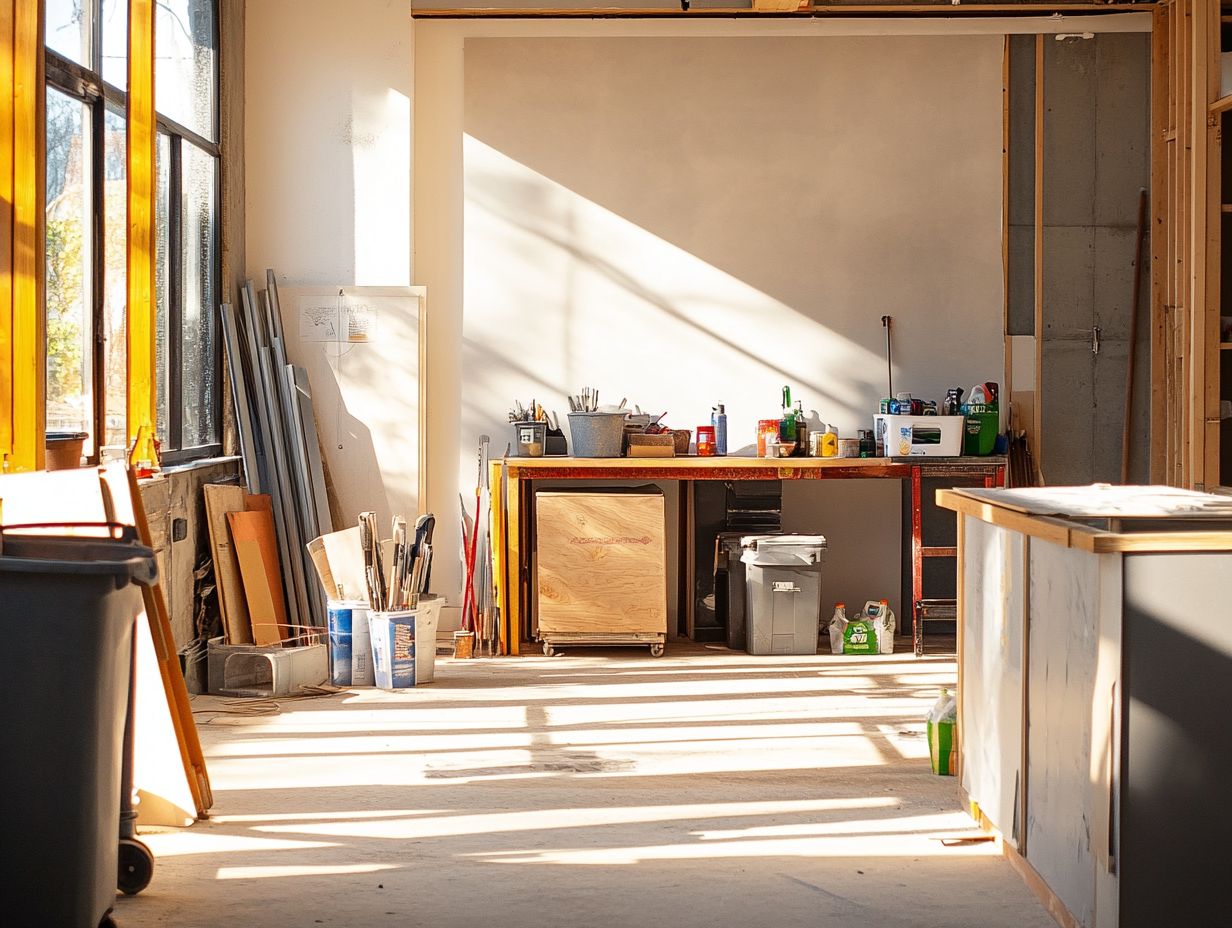
1. Plan Ahead and Be Strategic with Materials
Planning ahead and being strategic with materials is essential for achieving successful home renovations, especially as you seek to minimize construction debris and embrace sustainable practices.
By determining the necessary materials in advance and opting for eco-friendly choices like sustainable materials and paint with low levels of harmful chemicals you can significantly reduce waste and enhance energy efficiency.
This proactive approach supports effective waste management and aligns with the demand for zero-waste renovations, ensuring that every step of your construction process is both environmentally conscious and economically beneficial.
To accomplish these goals, it s vital to explore various methods for identifying sustainable materials.
- Researching local suppliers and seeking certifications that highlight eco-friendly products can make a significant difference.
- Incorporating prefabrication techniques can also be crucial, as they often reduce on-site waste while allowing for more efficient resource use.
- Optimizing energy sources through options like solar panels or energy-efficient appliances further elevates the sustainability of your renovation.
- Choosing low-VOC paints not only contributes to better indoor air quality but also makes your living space healthier.
By considering these elements, you can create a renovation project that respects the environment while ensuring long-term savings and comfort.
2. Reuse Materials from Demolition
Reusing materials from demolition is a savvy strategy for you to minimize construction debris and champion sustainable practices in your home renovations.
<pThis approach not only leads to considerable cost savings for homeowners like yourself but also plays a vital role in cutting down landfill waste and conserving precious natural resources.
For example, reclaimed wood can be transformed into exquisite flooring or beautiful furniture, while bricks and tiles can find new life as charming walkways and inviting patios.
Many local recycling programs offer you convenient drop-off locations or collection services for these reusable materials, making the entire process seamless.
By embracing these practices, you can contribute to increased awareness of the ecological benefits, including reduced carbon footprints and healthier living environments in your community.
3. Choose Durable and Long-Lasting Materials
Choosing durable and long-lasting materials is paramount for sustainable home renovations. This approach ensures that resources are used efficiently and waste is minimized over time.
By opting for materials like bamboo, cork, and marble, you can elevate the aesthetics of your space while making a positive contribution to the environment. These materials are celebrated for their resilience and low maintenance requirements, making them ideal for your busy lifestyle.
For example, bamboo grows rapidly and effectively sequesters carbon, while cork is harvested sustainably, allowing trees to continue thriving. Marble, with its timeless elegance, can endure for decades with minimal upkeep.
Consulting green ratings scores that show how eco-friendly a material is can offer valuable insights into the environmental impact of various options, enabling you to make choices that align with both your personal needs and your commitment to ecological responsibility.
Don t wait! Start planning your green renovation now to make a positive impact on your home and the planet!
4. Donate or Sell Unwanted Materials
Donate or sell unwanted materials to reduce construction debris and support community organizations.
Evaluate the condition of your items, such as furniture, appliances, or leftover supplies. Organizations like Goodwill or Habitat for Humanity often accept quality materials, giving them a new home.
Your efforts contribute to a community and minimize waste. This fosters social responsibility and can even lead to tax deductions.
5. Opt for Sustainable and Eco-Friendly Options
Choosing sustainable and eco-friendly options is crucial for home renovations. Doing so can significantly reduce your environmental footprint.
By selecting materials that emphasize renewable resources and minimal energy consumption, you create a healthier planet and a more inviting living space.
Sustainable materials minimize waste and use non-toxic components, fostering a safer environment for you and your loved ones. Incorporating energy sources like solar panels offers a clean alternative to fossil fuels.
Using low-VOC paint improves air quality by releasing fewer harmful emissions during application.
Understanding green ratings is key; by evaluating the sustainability of products, you can make informed choices about everything from insulation to flooring, ultimately crafting a home that reflects your values and cares for the planet.
6. Use Recycled or Reclaimed Materials
Using recycled or reclaimed materials is a great way to integrate sustainability into home renovations while reducing construction debris.
These choices significantly lower the overall carbon footprint of your project and contribute to conserving natural resources.
For example, reclaimed wood from old barns or pallets adds unique character to your flooring and furniture and helps prevent deforestation.
Local recycling centers often offer a variety of reclaimed tiles, bricks, and even furniture, allowing you to find budget-friendly options that maintain high quality.
Incorporating these materials can elevate your space’s aesthetics and promote a lifestyle that prioritizes environmental consciousness.
7. Avoid Single-Use and Disposable Items
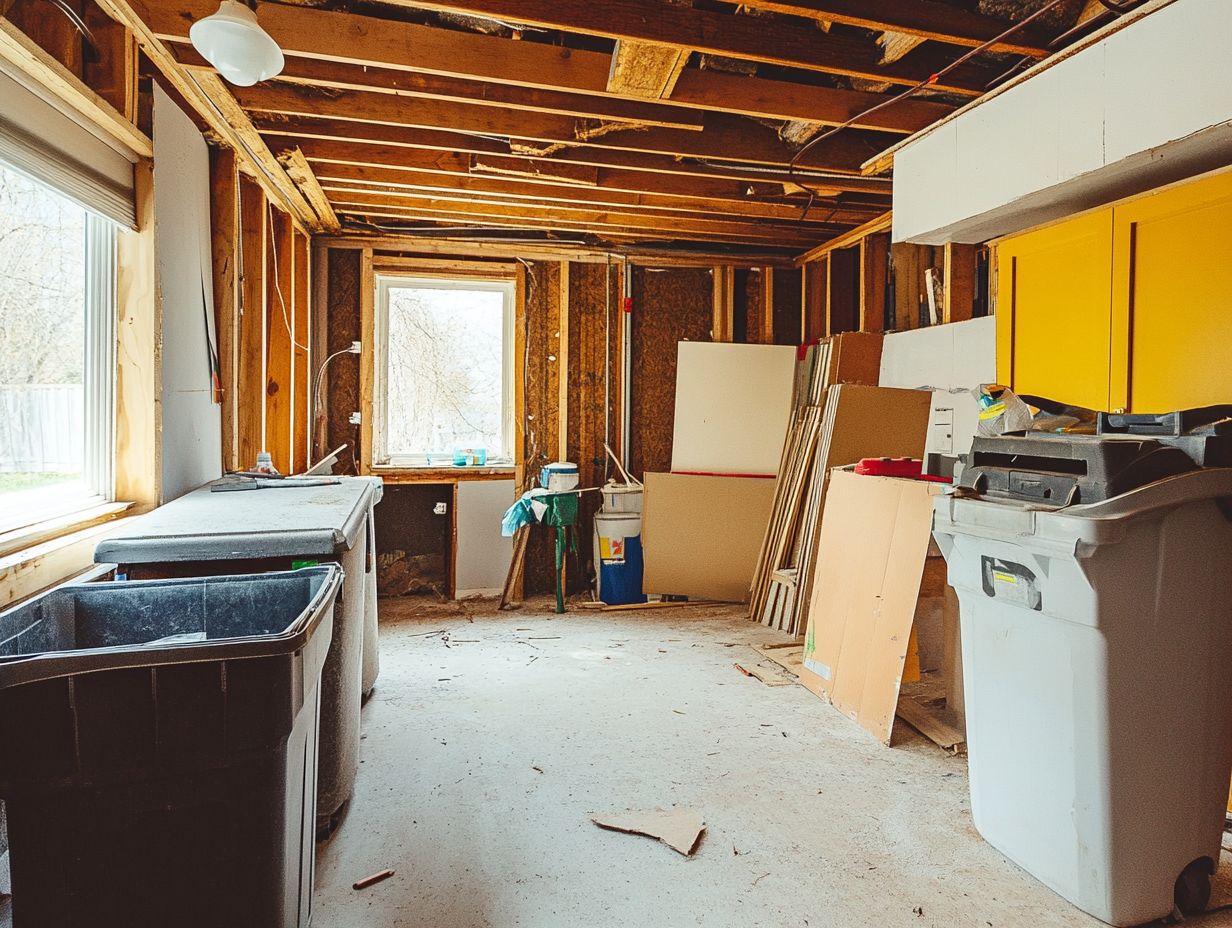
Avoiding single-use and disposable items is vital for anyone aiming for a zero-waste renovation.
By consciously selecting materials and tools, you can significantly lessen the environmental impact of your projects.
For instance, using reusable bags to transport supplies cuts down on plastic waste and streamlines your process.
Investing in durable, high-quality tools eliminates the need for constant replacements, further reducing waste generation.
Prioritizing effective waste management strategies, such as composting and recycling, enhances your renovation experience while promoting sustainable consumption, benefiting both the environment and future generations.
8. Properly Dispose of Hazardous Materials
Properly disposing of hazardous materials is essential for complying with regulations and protecting public health during renovations.
The process starts with a thorough assessment of materials in your home think old paints, solvents, batteries, and electronic waste. These items could pose significant risks if mishandled.
After identifying what needs to go, consult local regulations to understand the specific disposal requirements in your area. Local recycling centers are invaluable resources, often providing designated drop-off sites for hazardous items.
By following established guidelines and utilizing community resources, you can significantly reduce potential environmental harm while supporting sustainable practices that benefit everyone.
9. Consider Salvaging and Repurposing Old Furniture
Salvaging and repurposing old furniture can greatly enhance your sustainable practices in home renovations while breathing new life into items that might otherwise end up in the landfill.
Imagine transforming a vintage dresser into a chic bathroom vanity or converting a weathered wooden door into a one-of-a-kind dining table! The possibilities for creative reuse are truly endless.
These techniques save you money and reduce waste. They also lessen the demand for new resources. Engaging in such projects allows you to embark on a journey of creativity and nostalgia, revitalizing cherished pieces that tell a story.
Donate items in good condition to local charities. This helps them find new homes while fostering a sense of community and promoting an environmentally friendly mindset.
10. Hire a Green Contractor
Hiring a green contractor can significantly elevate the sustainability of your home renovations. These professionals are well-versed in environmentally friendly methods and effective waste management strategies.
They often hold certifications from esteemed organizations like the National Association of Home Builders or have completed specialized training programs in green building techniques. Their expertise allows them to recommend the best sustainable materials and ensure that energy-efficient systems are installed correctly.
They can optimize natural light and enhance insulation, leading to substantial long-term savings on your energy bills while also reducing the ecological footprint of the construction process. By seamlessly integrating renewable resources and the latest technologies, these contractors help you create functional and environmentally responsible spaces.
What Are the Environmental Impacts of Renovation Waste?
The environmental impacts of renovation waste are significant. This waste contributes to greenhouse gas emissions and improper waste management in metropolitan areas, as improperly disposed construction debris clogs landfills.
This waste often contains materials like concrete, wood, metals, and plastics. Each material presents unique challenges for disposal and recycling. Many of these components can release harmful pollutants when they decompose or are incinerated, worsening air and soil contamination.
Act now to minimize your renovation waste and protect the environment! It s essential to adopt sustainable practices within the construction sector that prioritize recycling and repurposing materials. By doing so, you can minimize waste and reduce the carbon footprint associated with renovations.
Embrace responsible waste management strategies to be part of the movement toward a greener future, fostering a balance between development and environmental stewardship.
What Are the Most Common Types of Waste During Renovation?
During your renovation projects, you ll likely encounter various types of waste, including:
- Construction debris
- Hazardous materials
- Items that could be reused or recycled
These wastes often arise from removing old fixtures, demolishing walls, and replacing flooring or roofing materials. Common culprits include wood, metals, concrete, and insulation materials that can easily contribute to landfill overflow if not managed properly.
Among these, hazardous substances like asbestos, lead paint, and certain chemical solvents present serious risks to both human health and the environment. Identifying these hazardous materials is essential; improper disposal can lead to soil and water contamination.
By adopting sustainable disposal methods, you can mitigate these risks and promote recycling and reuse, ultimately helping to conserve our precious natural resources.
What Are the Benefits of Reducing Waste During Renovation?
Reducing waste during renovation offers numerous benefits, including cost savings, environmental sustainability, and community well-being through responsible disposal practices.
By embracing sustainable methods like reusing materials, recycling debris, and sourcing local, eco-friendly products, you can cut down on renovation costs while easing the burden on landfills.
For example, a historic renovation project that salvages original fixtures minimizes the purchase of new materials. This not only preserves cultural heritage but also strengthens community identity.
Communities that adopt strong waste reduction plans often enjoy lower pollution levels and more job opportunities at recycling facilities. This results in a healthier environment and a thriving local economy.
These initiatives set the stage for long-term savings and foster resilient communities that champion sustainability.
How Can a Homeowner Plan for a Low-Waste Renovation?
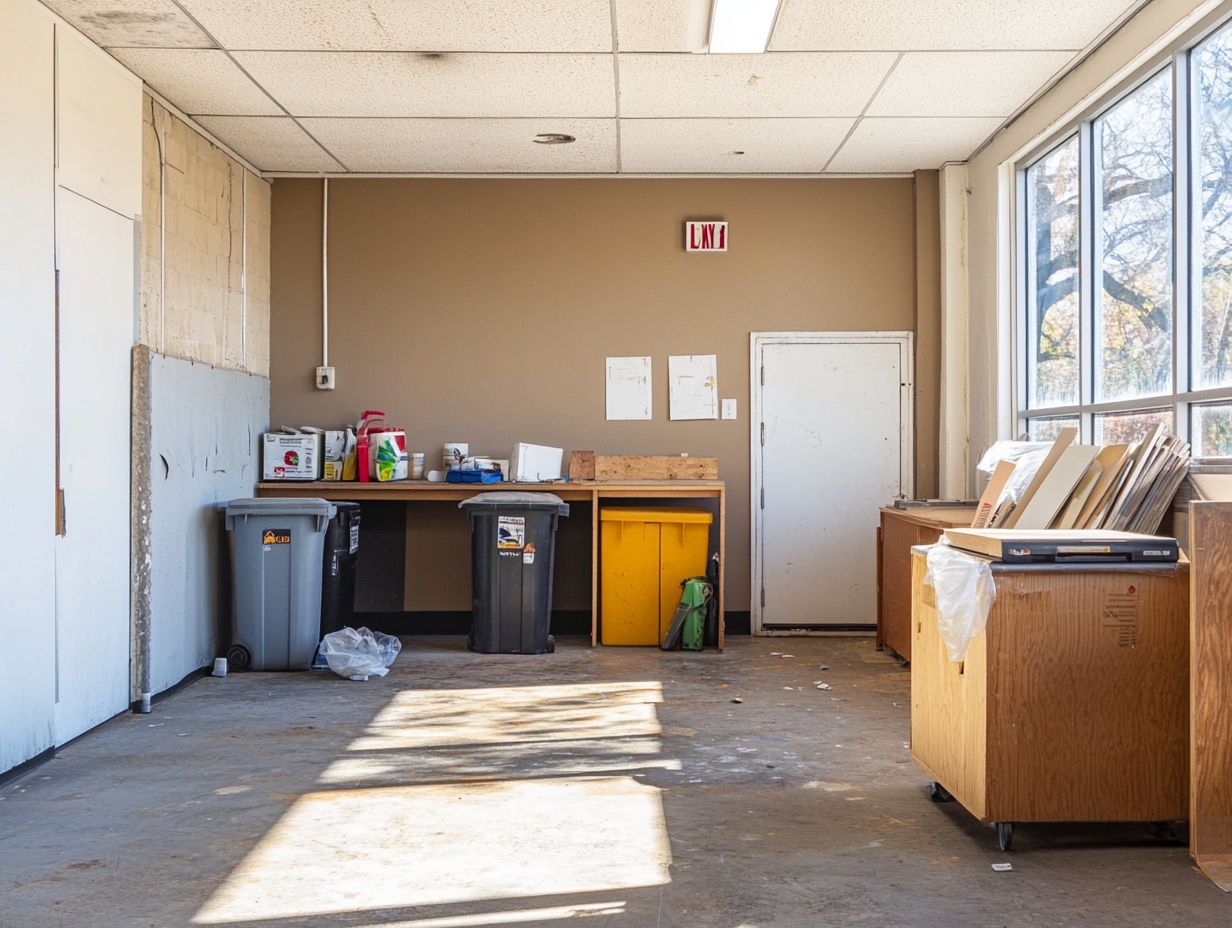
Planning for a low-waste renovation involves strategic steps to minimize waste while maximizing sustainability in your project.
Start by understanding your goals. This clarity helps you set actionable waste management targets that guide your decisions.
Next, source sustainable materials like reclaimed wood or recycled metal. These options reduce your environmental impact and lead to unique, eye-catching design elements.
Implementing recycling programs is essential to ensure responsible disposal of materials and promote reuse whenever possible.
Hiring green contractors who prioritize eco-friendly practices is crucial. They can provide valuable insights and tailored strategies to help you achieve your low-waste objectives.
Together, these efforts create a cohesive plan that beautifully marries environmental responsibility with aesthetic appeal.
What Are Some Tips for Recycling and Reusing Materials During Renovation?
Implementing effective strategies for recycling and reusing materials during your renovation can significantly reduce construction debris while enhancing the overall sustainability of the project.
Begin by educating yourself about local recycling centers and the programs they offer since local governments often provide specific guidelines for disposing of various materials.
There are many creative ways to repurpose items, like turning old cabinetry into stylish storage solutions or using salvaged wood to create stunning feature walls.
But don t worry; collecting materials is just the start. It s essential to plan ahead and consult with contractors experienced in sustainable practices. This ensures your renovation looks fabulous and leaves a minimal environmental footprint.
Engaging with the community can also be beneficial. Local swap groups offer opportunities to exchange materials, fostering a culture of reuse that benefits everyone.
What Are Some Common Challenges in Reducing Waste During Renovation?
Homeowners often face challenges when minimizing waste during renovations, especially in sourcing sustainable materials and implementing effective waste management solutions.
You may feel unsure about how to recycle or repurpose existing materials, which can contribute to landfill waste. Balancing your budget can also be challenging, especially since eco-friendly options may seem pricier at first glance.
To navigate these hurdles, consider tapping into local community resources like workshops or online platforms focused on sustainable practices. Thoughtful planning is key; by establishing a clear waste reduction strategy before you begin renovations, you can seamlessly incorporate sustainable choices.
This approach benefits the environment and enhances your financial well-being in the long run.
How Can a Homeowner Encourage Sustainable Practices During Renovation?
Homeowners have a crucial opportunity to champion sustainable practices during renovations by making informed decisions and engaging their community in environmentally friendly projects.
Actively participating in local recycling programs can ensure that materials like wood, metal, and concrete are diverted from landfills and repurposed effectively.
Supporting businesses that prioritize environmentally responsible practices not only contributes to building a greener economy but also inspires other enterprises to follow suit.
Collaborating with community organizations amplifies your impact. This fosters a network of like-minded individuals who work together on projects promoting sustainable living, such as community gardens and clean-up drives.
These collective efforts strengthen neighborhood bonds and create a lasting positive effect on the environment.
What Are Some Alternatives to Traditional Renovation Materials?
Exploring alternatives to traditional renovation materials opens up a world of sustainable and eco-friendly options that benefit both your home and the environment.
Considering innovative solutions like bamboo and recycled plastic can reduce your carbon footprint while embracing materials that are often more durable and versatile.
Bamboo grows quickly and is very strong. It is a renewable resource that can replace hardwoods in flooring and cabinetry.
Recycled plastic serves as an excellent choice for decking and outdoor furniture, resisting weathering and termites.
Both of these alternatives enhance your home while contributing to a circular economy, promoting waste reduction and resource conservation.
In today’s world, where sustainability is paramount, choosing these materials is increasingly vital in home renovations.
How Can a Homeowner Properly Dispose of Renovation Waste?
Properly disposing of renovation waste is vital for maintaining environmental integrity and ensuring that hazardous materials are handled with care.
By identifying harmful substances like paints, solvents, and other chemicals often found during home improvement projects, you play a significant role in fostering a healthier ecosystem.
Once you’ve pinpointed hazardous materials, locate local recycling centers equipped to manage them appropriately. These centers typically offer valuable guidance on what can be recycled or safely disposed of, promoting sustainable practices within your community.
Organizing your waste efficiently can streamline the disposal process, minimize contributions to landfills, and inspire others to adopt similar practices in their renovation efforts.
What Are Some Ways to Incorporate Sustainable Design in a Renovation Project?
Incorporating sustainable design into your renovation project can dramatically elevate both its environmental performance and aesthetic appeal, aligning perfectly with today’s eco-friendly standards.
Prioritizing elements such as natural light optimization creates spaces that minimize energy consumption and enhance your well-being. Strategically placing windows and skylights allows sunlight to flood your interiors, decreasing your dependence on artificial lighting.
Choosing energy-efficient appliances, like those certified by ENERGY STAR, reduces your utility bills while lowering your carbon footprint.
Selecting eco-friendly materials, such as reclaimed wood or recycled metal, champions sustainability and infuses your spaces with unique character.
Many successful examples exist, like the renovation of a historic warehouse that transformed underutilized areas into vibrant urban living spaces while preserving environmental integrity.
Frequently Asked Questions
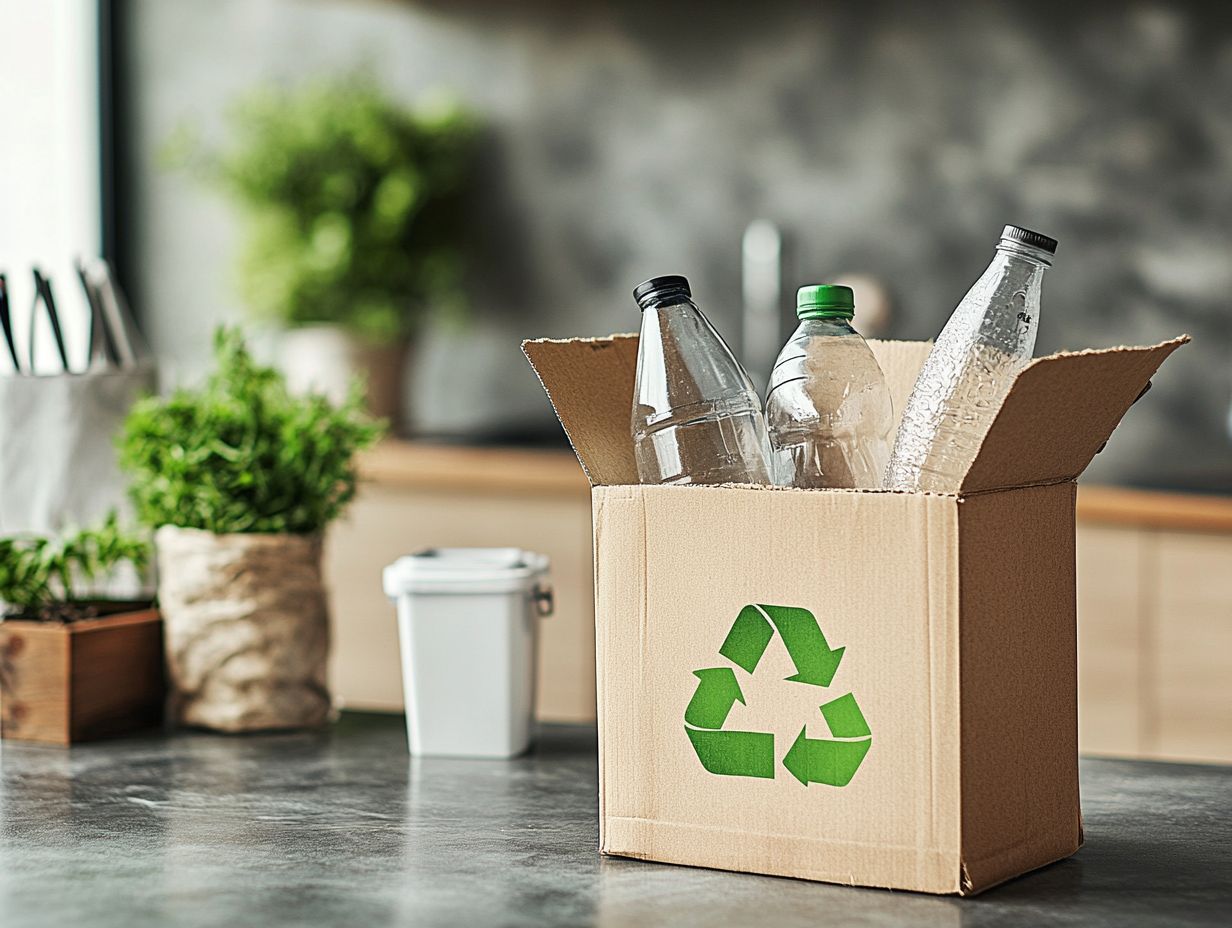
What are some ways to reduce waste during renovation?
- Plan ahead
- Salvage materials
- Minimize demolition
- Donate reusable items
- Use eco-friendly materials
- Properly dispose of hazardous waste
Take action now! Start your sustainable renovation journey today and make a positive impact on the environment.
Why Is It Important to Reduce Waste During Renovation?
Cutting waste during your renovation isn’t just good for the planet; it can also save you money! It protects the environment and conserves our precious natural resources.
How Can I Plan Ahead to Reduce Waste During Renovation?
Create a detailed renovation plan. Accurately measure the materials you need and research sustainable building practices and materials.
What Are Some Eco-Friendly Materials That Can Be Used During Renovation?
Consider using bamboo flooring, reclaimed wood, or recycled glass countertops. You can also opt for low VOC paint, which means it has fewer harmful chemicals, and energy-efficient appliances.
What Should I Do With Hazardous Waste During Renovation?
Hazardous waste, like paint, batteries, and electronics, must be disposed of properly. Always contact your local waste management department to find out your disposal options.
Are There Any Incentives for Reducing Waste During Renovation?
In some areas, you might qualify for tax credits or rebates when using eco-friendly materials. Check with your local government to discover potential incentives!


